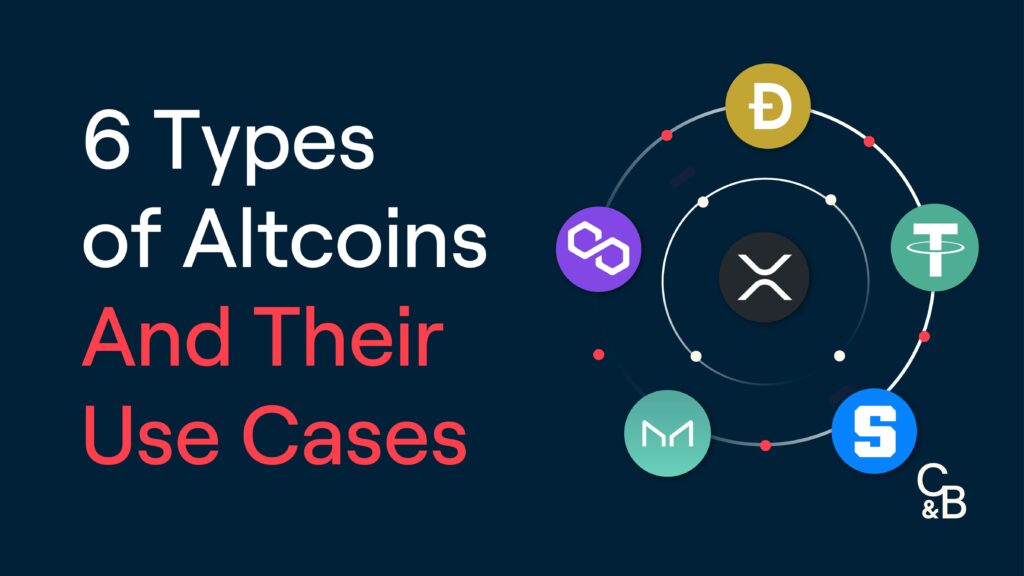In the ever-evolving world of finance, cryptocurrencies have carved out a significant niche. Revolutionizing the way we perceive and interact with digital currencies. Beyond the pioneering Bitcoin, a diverse array of alternative cryptocurrencies, commonly known as altcoins. Have emerged, offering unique features, technologies, and uses that distinguish them from their forebearer. Altcoins, which include notable names like Ethereum, Ripple, and Litecoin, are not just Bitcoin replicas; they often aim to address the perceived limitations of Altcoins or explore new opportunities in the blockchain space. Their significance in today’s financial landscape cannot be overstated. They contribute to the decentralization of financial services, offer enhanced privacy features, and sometimes even foster community governance. This dynamic shift towards altcoins reflects a broader acceptance and interest in cryptocurrency as a viable asset class and a transformative technology. Signaling a robust and diverse future for digital currencies worldwide.
The Birth of Altcoins
The genesis of altcoins traces back to the aftermath of Bitcoin’s success. Marking a pivotal moment in the history of digital currencies. Bitcoin’s groundbreaking technology inspires innovators and developers. Began to explore the vast potential of the blockchain, aiming to enhance, refine, or entirely reimagine the capabilities of their predecessors. The motivations behind the creation of altcoins are as varied as the coins themselves. Ranging from the desire to improve transaction speeds and efficiency to introducing novel consensus mechanisms that promise greater security and decentralization. Since the introduction of the first altcoins, the market has witnessed exponential growth. Both in terms of the number of available cryptocurrencies and their collective market capitalization. This evolution reflects not just technological advancements but also a growing recognition of cryptocurrency’s potential to reshape the financial landscape. Altcoins have, thus, become more than just alternatives to Bitcoin; they represent the diverse aspirations of a global community looking to leverage blockchain technology for a future that is more inclusive, efficient, and secure.
Understanding the Different Types of Altcoins

Navigating the diverse landscape of altcoins, we encounter a fascinating variety, each designed with specific features and purposes in mind. Broadly, these can be categorized into Utility Tokens, Security Tokens, Stablecoins, and Privacy Coins. Utility Tokens, such as Ethereum, provide access to a blockchain’s functionalities, enabling decentralized applications and smart contracts. Security Tokens represent an investment in real-world assets, offering a digital, blockchain-based stake in external enterprises or projects. Stablecoins, like Tether, aim to provide the best of both worlds: cryptocurrency’s innovation with the stable value of traditional currencies, mitigating the notorious volatility of the crypto market. Lastly, Privacy Coins, such as Monero, prioritize anonymity and security, making transactions virtually untraceable. Each category showcases the versatility of altcoins, from enhancing user engagement in digital platforms to offering novel solutions for investment and privacy, thereby highlighting the adaptability and potential of blockchain technology in addressing diverse needs and challenges.
How Altcoins Function
At the heart of altcoins lies blockchain technology, a decentralized ledger that records all transactions across a network of computers. Ensuring transparency, security, and immutability. Altcoins function through various mechanisms like mining or staking, which are processes used to validate transactions and secure the network. Mining involves solving complex mathematical puzzles to add new blocks to the blockchain. While staking allows coin holders to participate in network operations, offering a more energy-efficient alternative. Consensus algorithms, such as Proof of Work (PoW) and Proof of Stake (PoS), play a crucial role in governing how transactions are verified and added to the blockchain. Ensuring all participants agree on the ledger’s state without a central authority. Altcoin wallets and exchanges are vital components of the ecosystem, facilitating the storage and sending. And receiving digital currencies. as well as their conversion into other cryptocurrencies or fiat currencies. This intricate system enables altcoins to operate as a dynamic and innovative form of digital money, broadening the horizons of financial technology.
The Investment Landscape of Altcoins
The investment landscape of altcoins is as dynamic as it is diverse, influenced by a myriad of factors, including market sentiment, technological advancements, and regulatory developments. To navigate these waters, investors should focus on understanding market trends. Evaluating the underlying project fundamentals and the innovation, each altcoin brings to the table. It’s crucial to look beyond the hype, examining the team behind the project and its use case. Community support and the problem it aims to solve within the blockchain ecosystem. For those looking to dip their toes into altcoin investing, starting with reputable platforms and exchanges is critical. I will also utilize tools like market trackers and forums for community insights. Diversification and due diligence are your best allies in this volatile market, ensuring you are well-equipped to make informed decisions and explore the potential rewards altcoin investments offer.
Altcoins vs. Bitcoin: A Comparative Analysis
In the digital currency ecosystem, Bitcoin stands as the pioneering cryptocurrency. Yet altcoins present a realm of innovation and differentiation that merits a comparative analysis. Technically, many altcoins diverge from Bitcoin’s framework, introducing varied consensus mechanisms like Proof of Stake (PoS) that offer efficiency and scalability benefits. Functionally, altcoins expand beyond Bitcoin’s digital gold premise. Serving unique use cases from facilitating intelligent contracts and decentralized applications to providing enhanced privacy features. This diversification allows altcoins to cater to specific needs and markets, presenting advantages in flexibility and utility. From a market perspective, while Bitcoin remains a primary indicator of market health, altcoins often exhibit higher volatility. Reflecting their emerging status and speculative interest. However, this volatility is matched by the potential for significant returns and innovation. Positioning altcoins as both a challenging and compelling component of the cryptocurrency investment landscape with a future that promises further evolution and differentiation from Bitcoin’s foundational model.
The Challenges and Opportunities Ahead for Altcoins
The horizon for altcoins is both challenging and brimming with potential as they navigate through the evolving landscapes of Decentralized Finance (DeFi) and Non-Fungible Tokens (NFTs). These current trends are not only expanding the utility and applications of altcoins but also pushing the boundaries of what digital currencies can achieve in terms of financial innovation and inclusivity.

However, the path forward is fraught with obstacles, including regulatory scrutiny that varies wildly across jurisdictions. Scalability issues that can hinder performance and adoption, and the ever-present challenge of achieving widespread acceptance among both consumers and businesses. Despite these hurdles, the future of altcoins looks promising, with predictions pointing towards an increasingly significant role in global finance. As technology advances and regulatory frameworks become more accommodating, altcoins have the potential to be more accessible. Efficient and transparent financial services transform how we think about money, assets, and exchanges in a digitally interconnected world.
Safeguarding Your Altcoin Investments
Navigating the altcoin investment landscape demands vigilance and prudence, as the sector is not without its pitfalls and scams. Investors should be wary of too-good-to-be-true promises and conduct thorough research to discern legitimate projects from fleeting schemes. Due diligence involves scrutinizing the project’s whitepaper, understanding the team’s background, and assessing community engagement and technological viability. Securely storing your altcoin investments is equally crucial; utilizing hardware wallets for long-term holdings provides a robust layer of protection against cyber threats while being cautious of phishing scams and ensuring the security of your private keys can prevent unauthorized access to your assets. Additionally, diversifying your portfolio can mitigate risk, ensuring that your investment strategy is resilient against volatility. By adhering to these best practices, investors can better safeguard their altcoin investments, navigating the complexities of the cryptocurrency market with informed confidence and security.
Conclusion
As we conclude our exploration of altcoins, it’s clear that these digital currencies hold the transformative potential to democratize finance. Making it more accessible, inclusive, and efficient. The diverse landscape of altcoins, with their innovative technologies and applications. Underscores the vibrant and dynamic nature of the cryptocurrency world. To those intrigued by the possibilities Altcoins presents, the journey is just beginning. Engaging with the altcoin community and staying informed about the latest developments. Continuous learning is a crucial step toward navigating this space responsibly. Remember, the key to unlocking the full potential of altcoins lies in informed and cautious participation. As we stand on the brink of a financial revolution, let’s move forward with a spirit of curiosity and vigilance. And a commitment to making the most of the opportunities altcoins offer. All while contributing to a future where finance is genuine for all.
